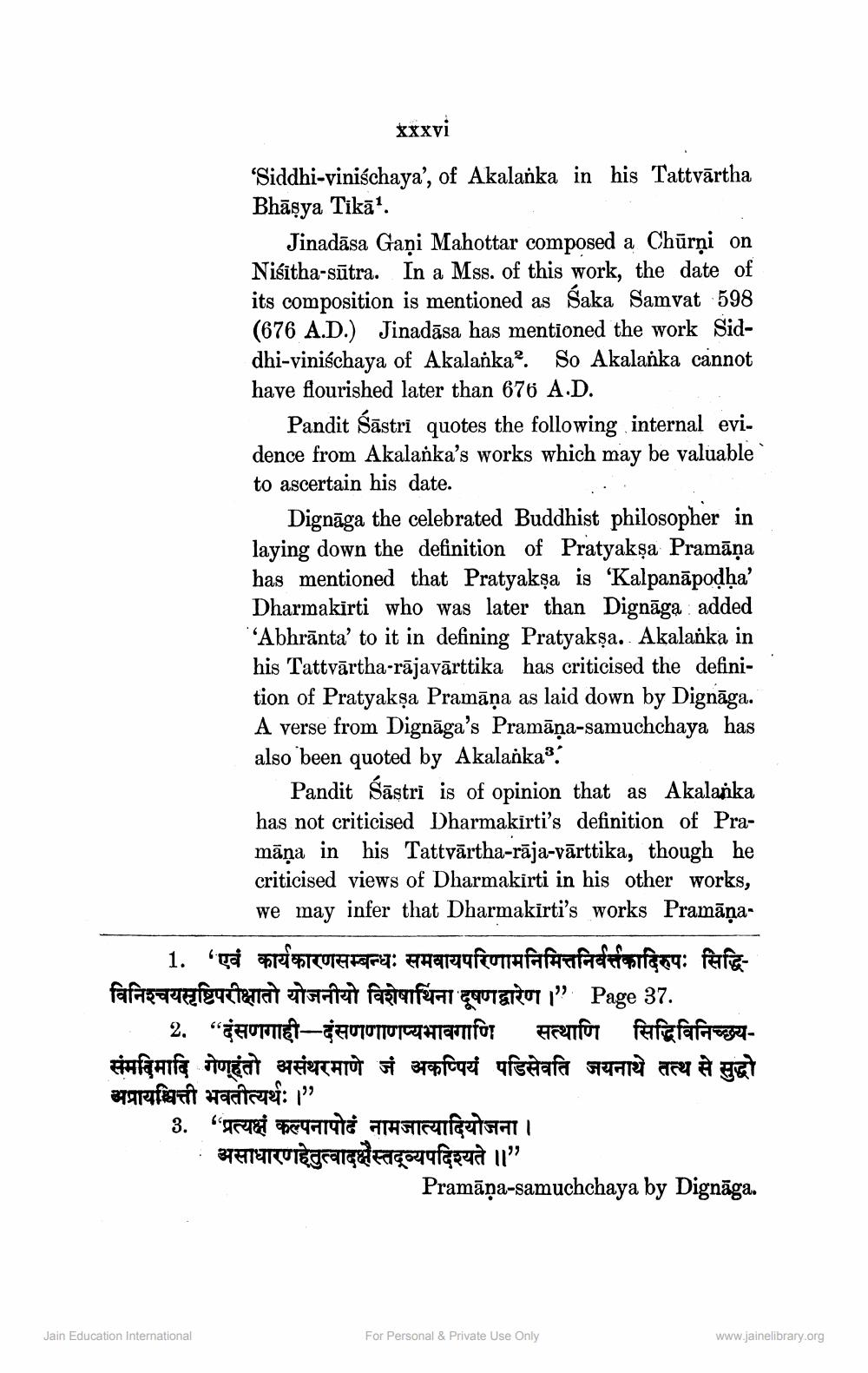________________
xxxvi
"Siddhi-viniśchaya', of Akalanka in his Tattvārtha Bhāşya Tikā".
Jinadāsa Gaņi Mahottar composed a Chūrņi on Niśītha-sūtra. In a Mss. of this work, the date of its composition is mentioned as Saka Samvat 598 (676 A.D.) Jinadāsa has mentioned the work Siddhi-vinischaya of Akalanka? So Akalanka cannot have flourished later than 676 A.D.
Pandit Šāstri quotes the following internal evidence from Akalanka's works which may be valuable to ascertain his date.
Dignāga the celebrated Buddhist philosopher in laying down the definition of Pratyakşa Pramāņa bas mentioned that Pratyakşa is 'Kalpanāpodha' Dharmakirti who was later than Dignāga added "Abhrānta’ to it in defining Pratyakşa. Akalanka in his Tattvārtha-rājavārttika has criticised the definition of Pratyakşa Pramāņa as laid down by Dignāga. A verse from Dignāga's Pramāņa-samuchchaya has also been quoted by Akalanka3.
Pandit Śāştri is of opinion that as Akalanka has not criticised Dharmakirti's definition of Pramāņa in his Tattvārtha-rāja-vārttika, though he criticised views of Dharmakirti in his other works,
we may infer that Dharmakirti's works Pramāņa1. "get oppe TCUTAFIT: Faarufunafafael telefonlan: felice fafara cupientemente uscatent fastefna EMUIEROTI” Page 37.
2. “दसणगाही-दसणणाणप्यभावगाणि सत्थाणि सिद्धिविनिच्छयसंमविमादि गेहंतो असंथरमाणे जं अकप्पियं पडिसेवति जयनाथे तत्थ से सुद्धो अप्रायश्चित्ती भवतीत्यर्थः।"
3. Sed ac A14 ATAFALGUTATI : TETETUTËTraga Faconureperat ll"
Pramāņa-samuchchaya by Dignāga.
Jain Education International
For Personal & Private Use Only
www.jainelibrary.org




